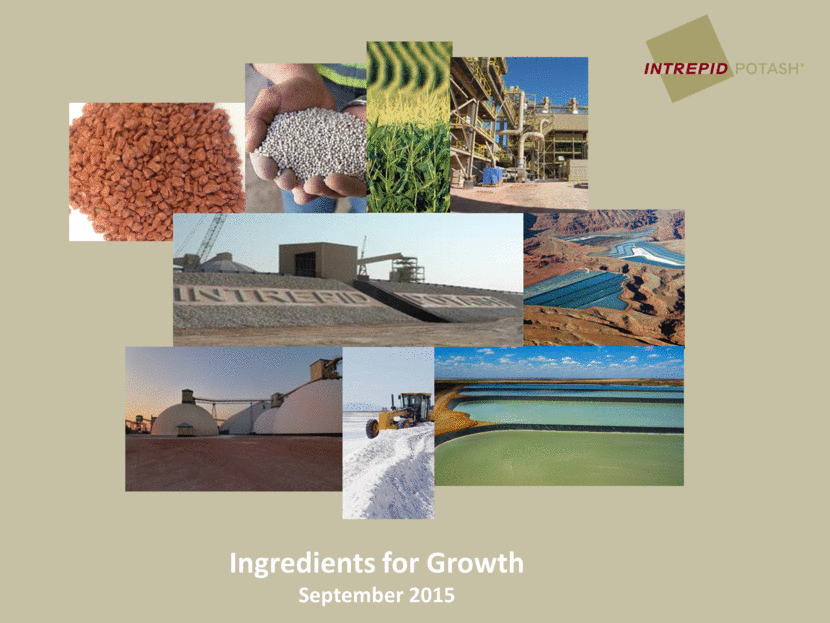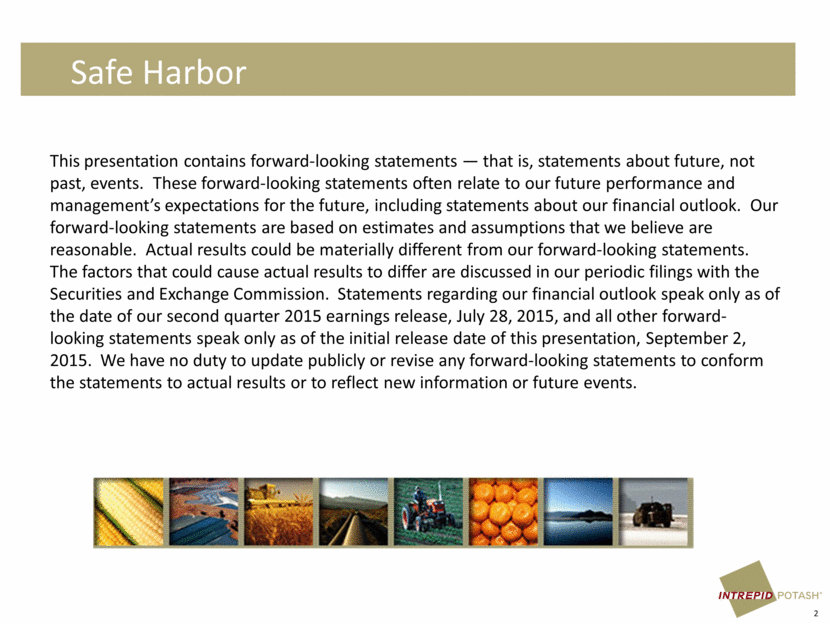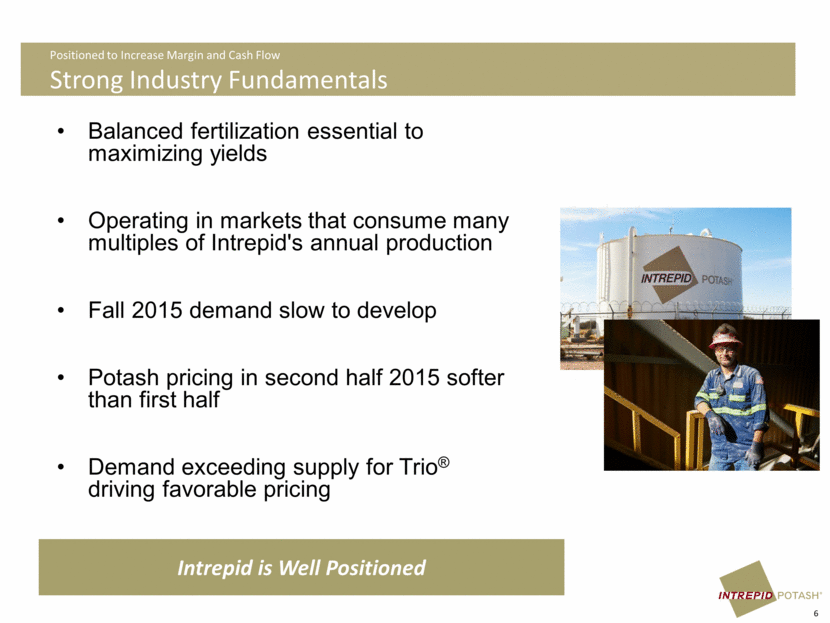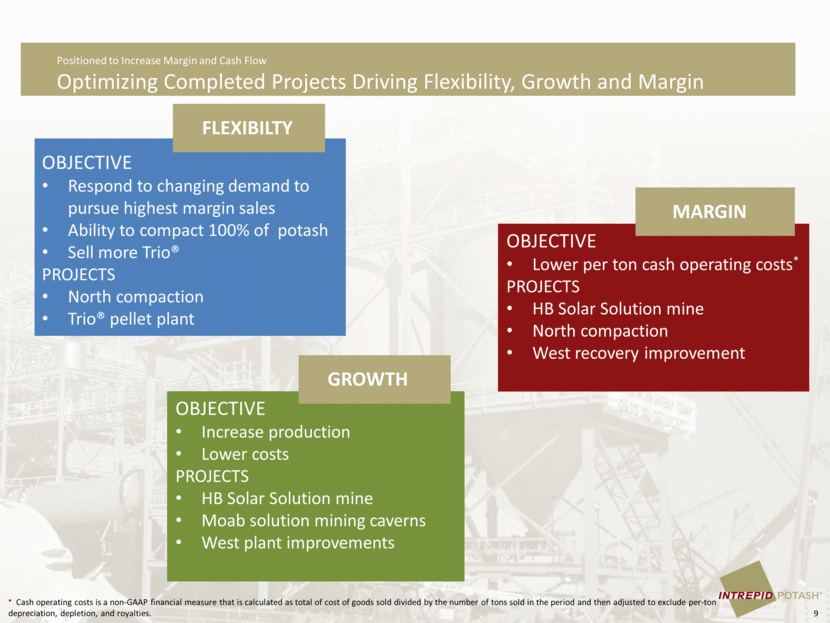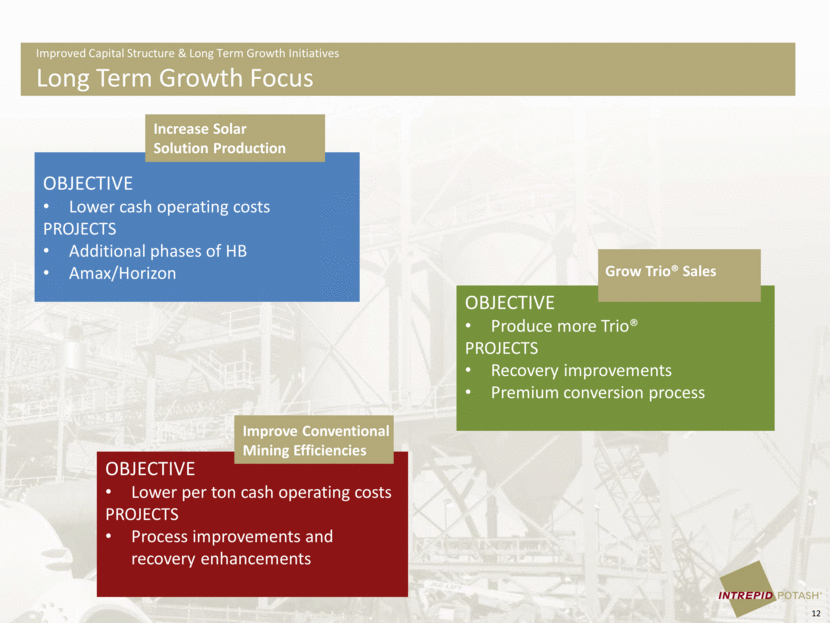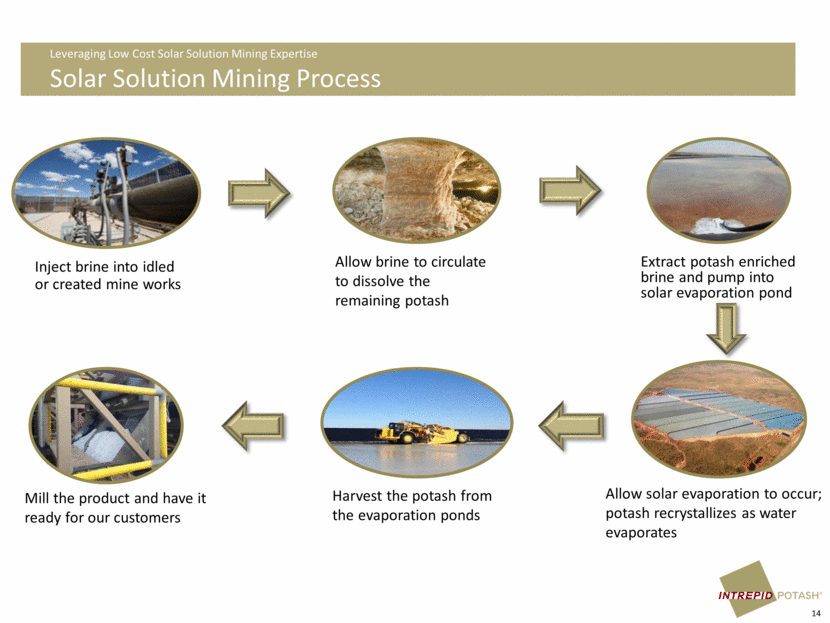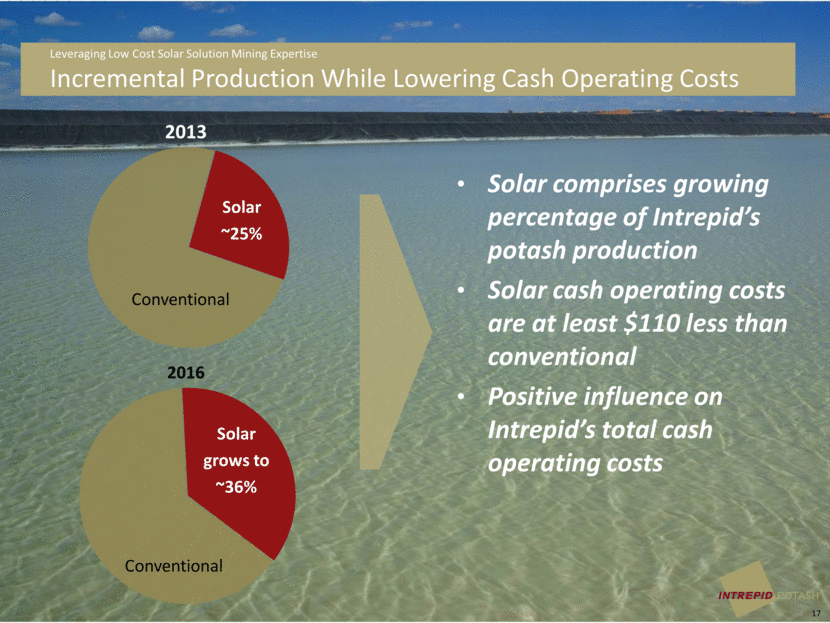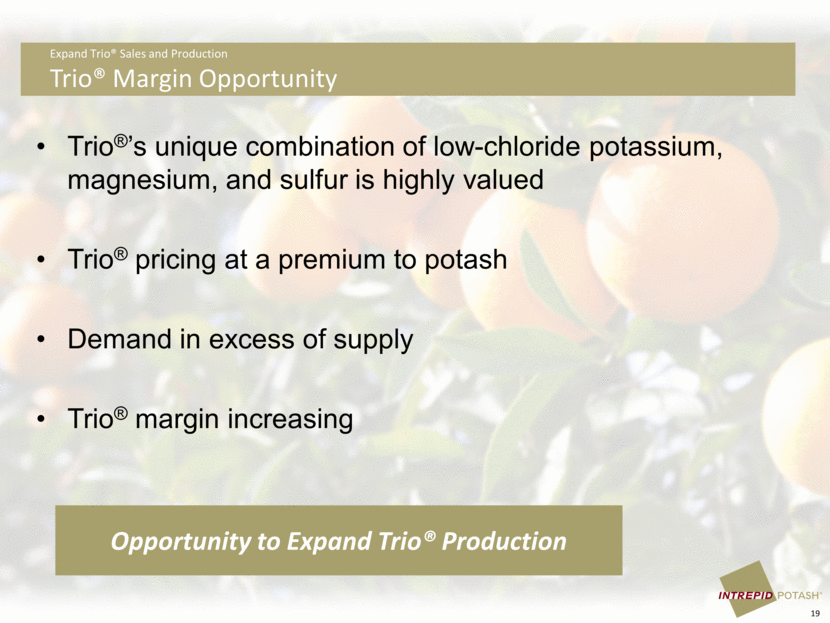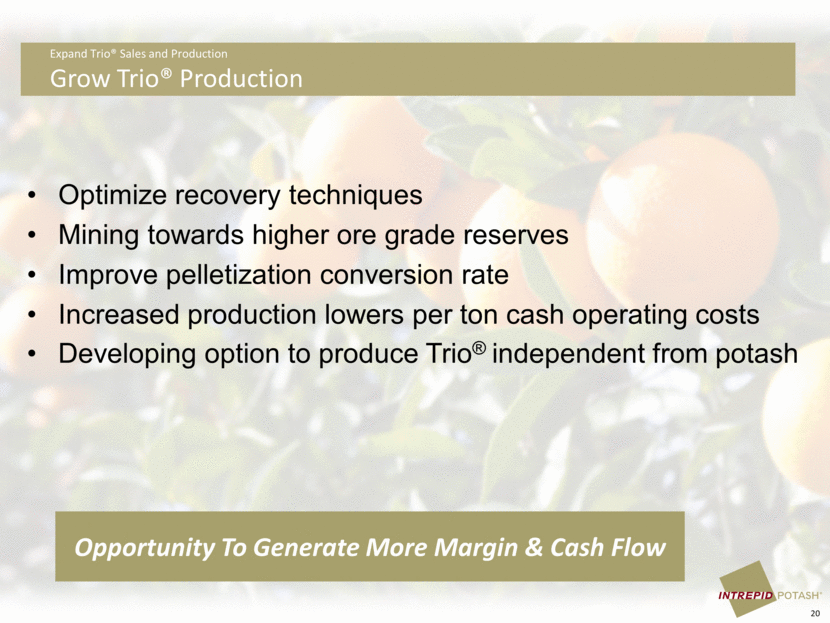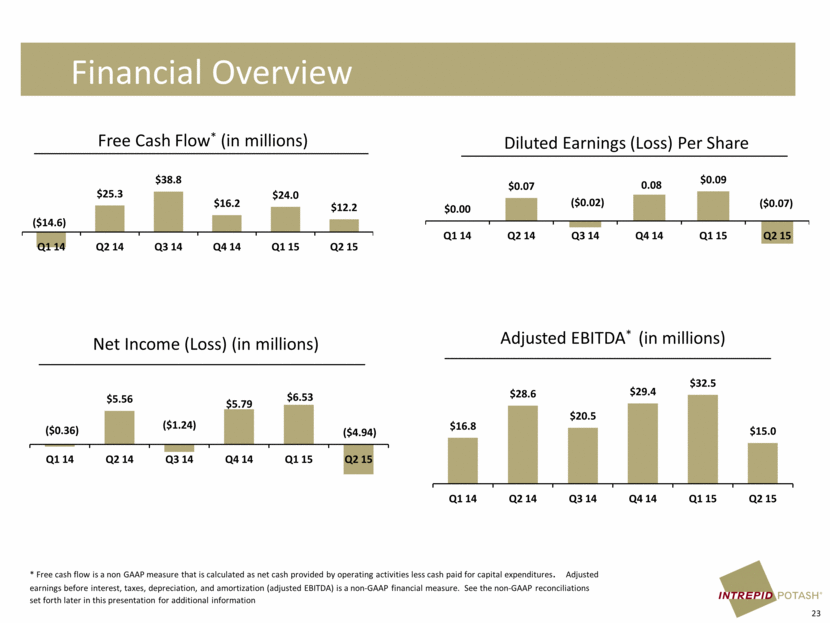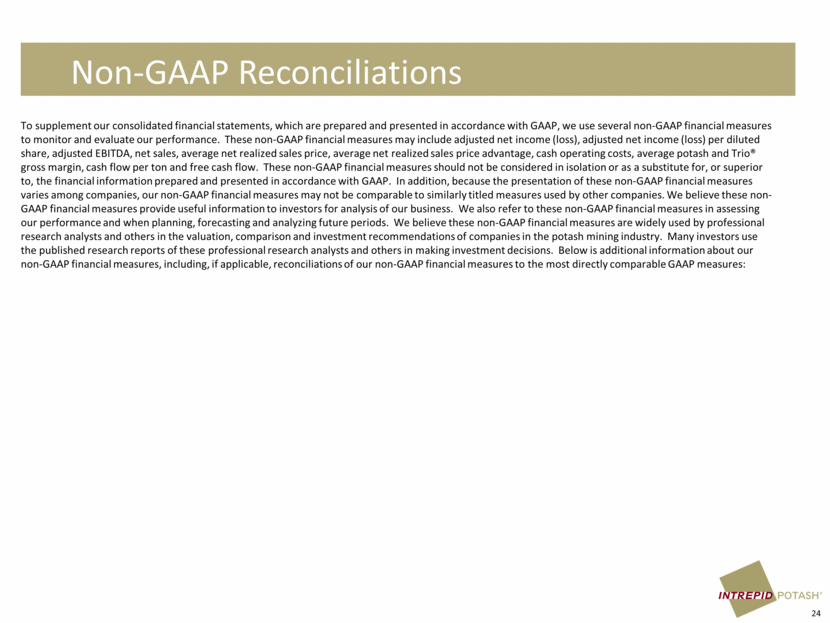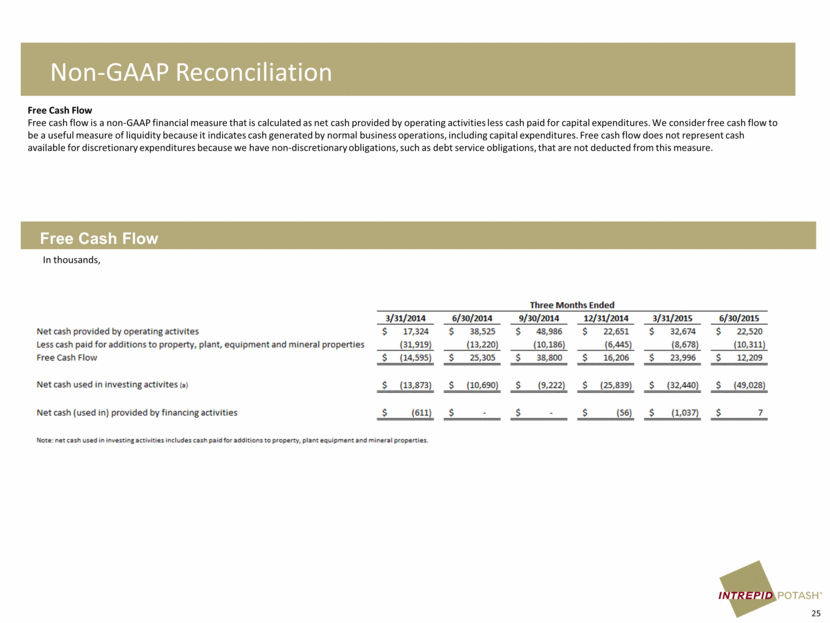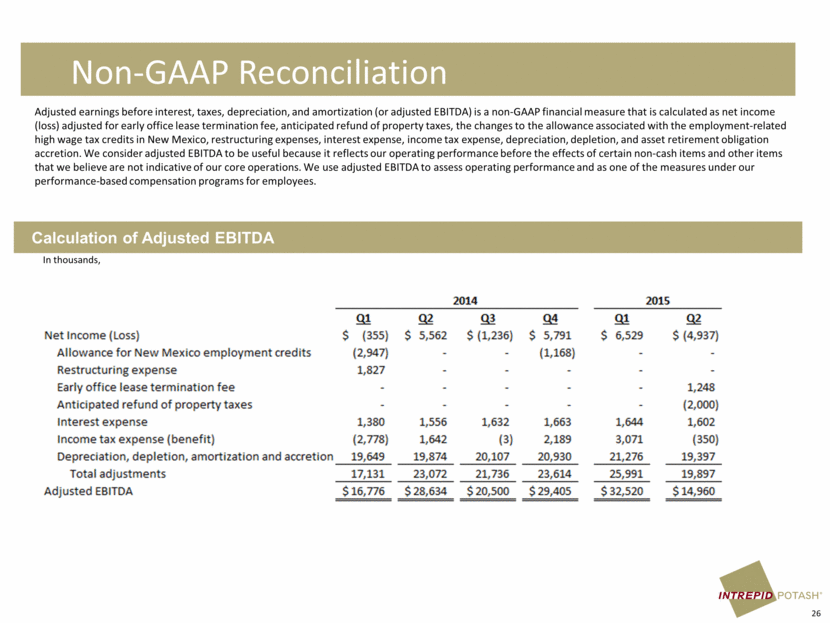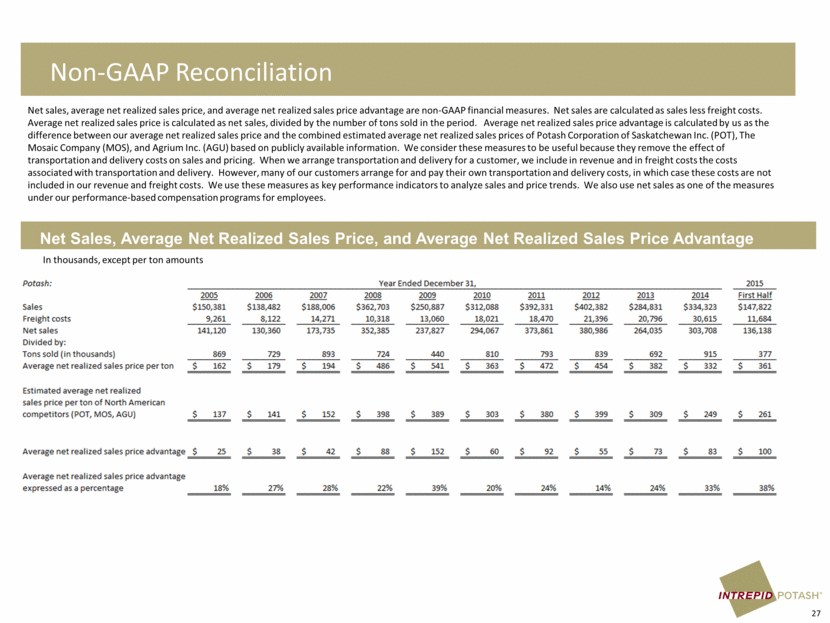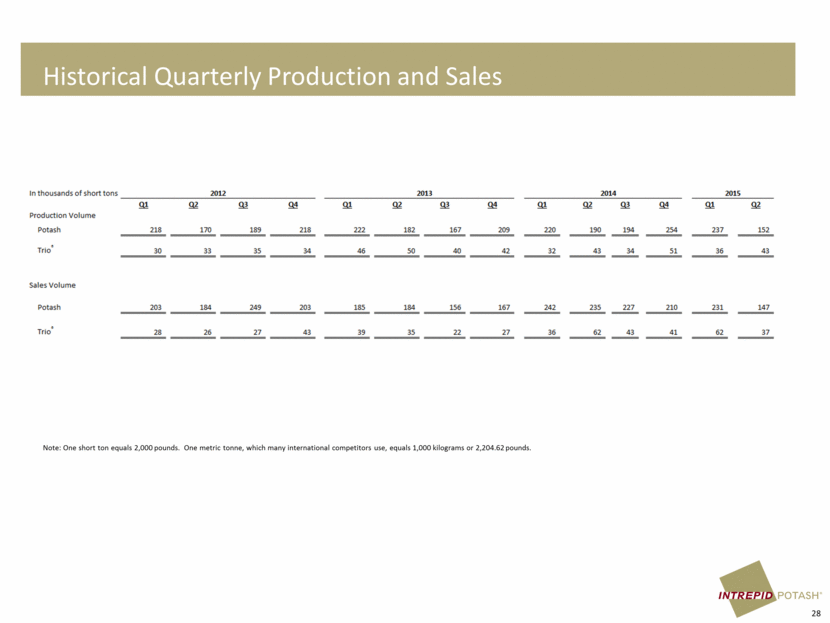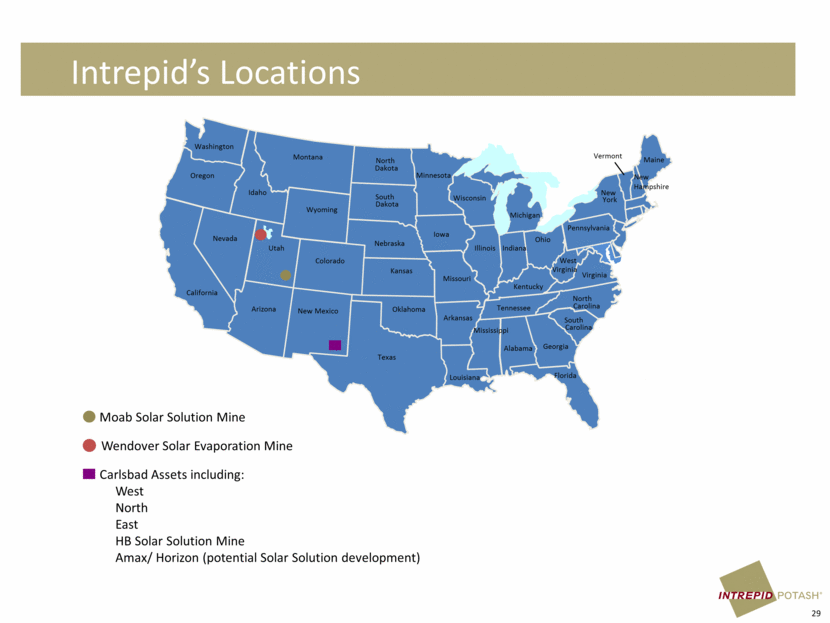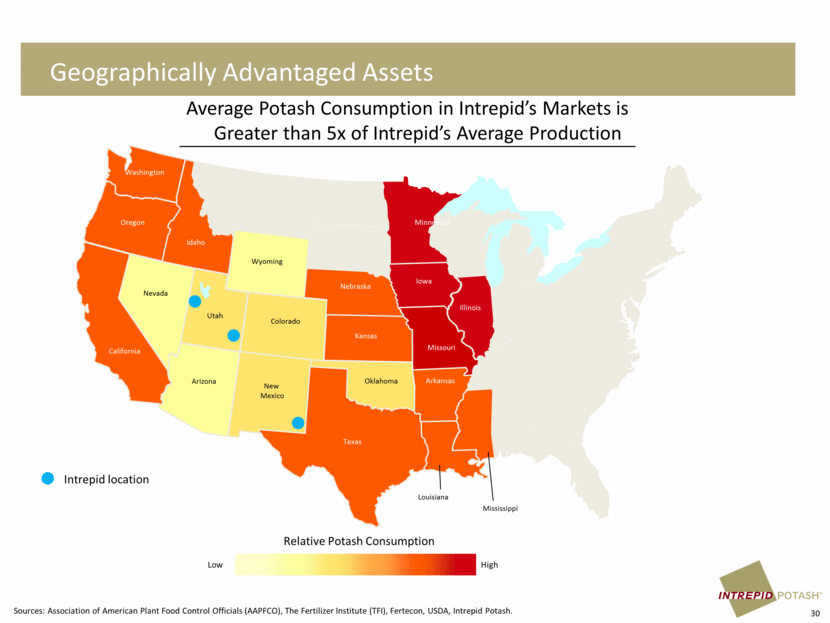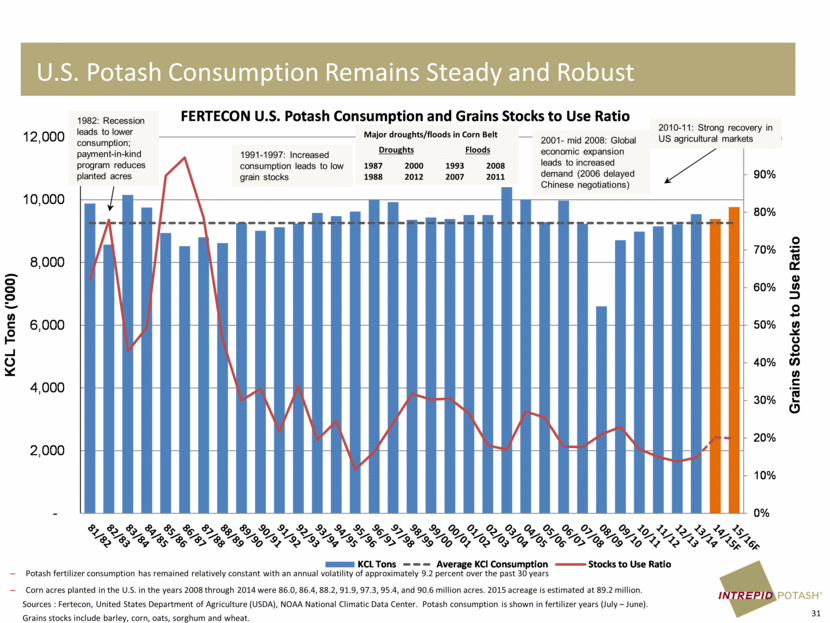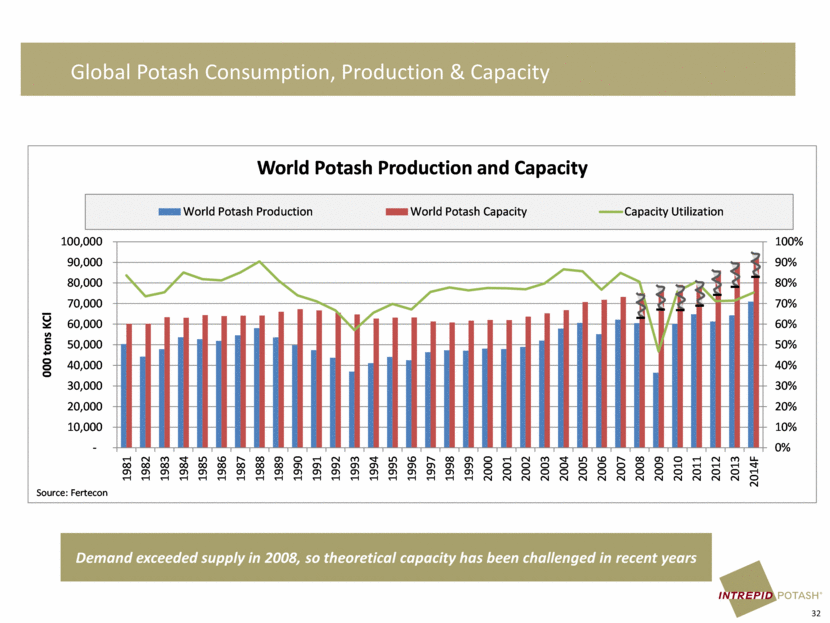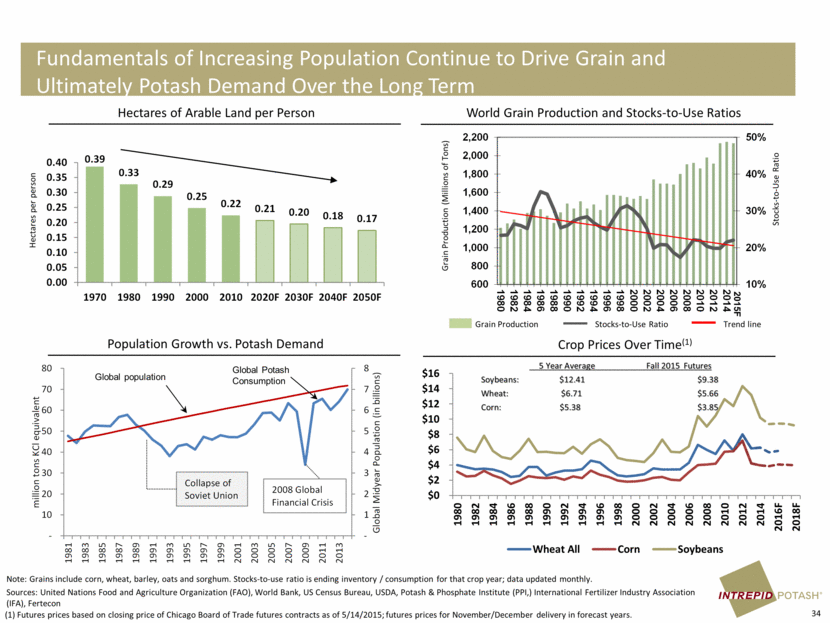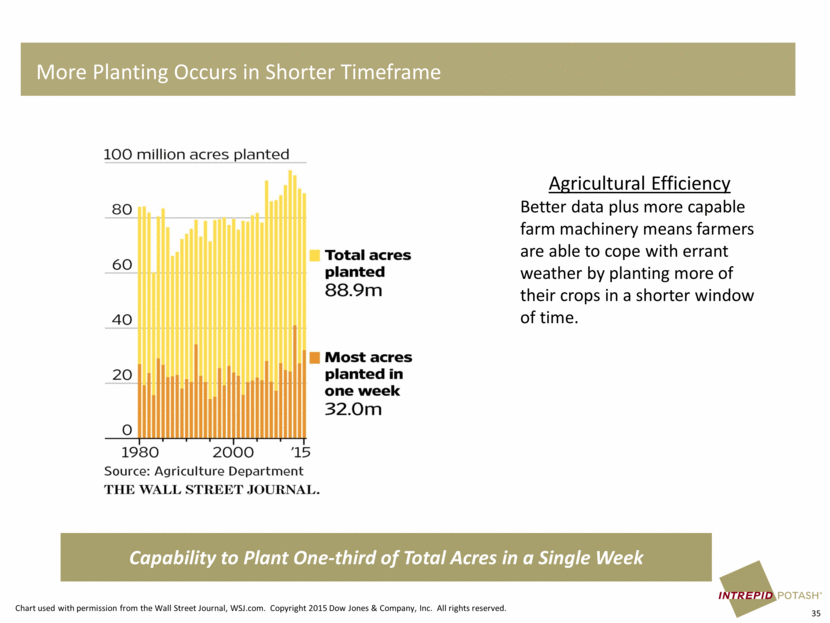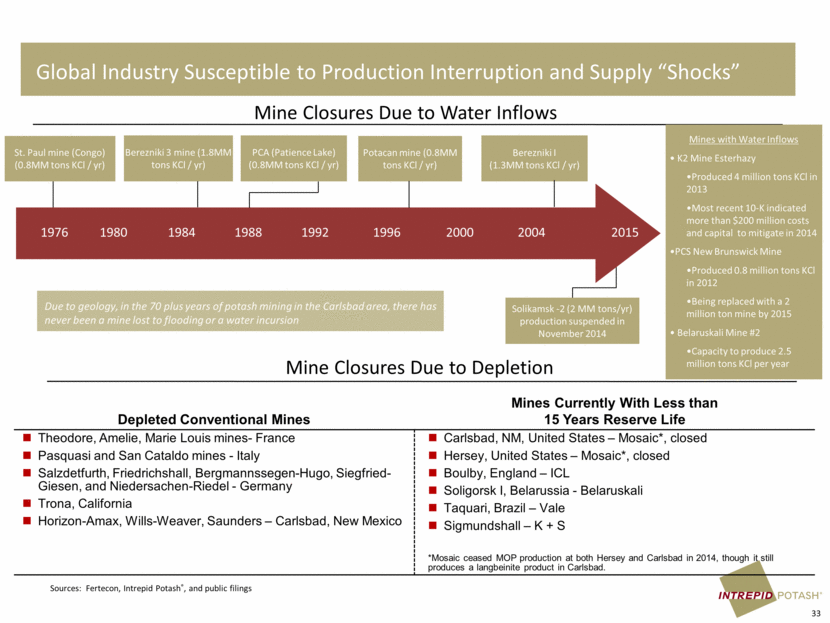
| Global Industry Susceptible to Production Interruption and Supply “Shocks” Depleted Conventional Mines Mines Currently With Less than 15 Years Reserve Life Theodore, Amelie, Marie Louis mines- France Pasquasi and San Cataldo mines - Italy Salzdetfurth, Friedrichshall, Bergmannssegen-Hugo, Siegfried-Giesen, and Niedersachen-Riedel - Germany Trona, California Horizon-Amax, Wills-Weaver, Saunders – Carlsbad, New Mexico Carlsbad, NM, United States – Mosaic*, closed Hersey, United States – Mosaic*, closed Boulby, England – ICL Soligorsk I, Belarussia - Belaruskali Taquari, Brazil – Vale Sigmundshall – K + S *Mosaic ceased MOP production at both Hersey and Carlsbad in 2014, though it still produces a langbeinite product in Carlsbad. Sources: Fertecon, Intrepid Potash®, and public filings Mine Closures Due to Water Inflows PCA (Patience Lake) (0.8MM tons KCl / yr) Potacan mine (0.8MM tons KCl / yr) Mines with Water Inflows K2 Mine Esterhazy Produced 4 million tons KCl in 2013 Most recent 10-K indicated more than $200 million costs and capital to mitigate in 2014 PCS New Brunswick Mine Produced 0.8 million tons KCl in 2012 Being replaced with a 2 million ton mine by 2015 Belaruskali Mine #2 Capacity to produce 2.5 million tons KCl per year St. Paul mine (Congo) (0.8MM tons KCl / yr) 1980 1984 1988 1996 2000 2015 2004 1992 1976 Berezniki I (1.3MM tons KCl / yr) Berezniki 3 mine (1.8MM tons KCl / yr) Mine Closures Due to Depletion Due to geology, in the 70 plus years of potash mining in the Carlsbad area, there has never been a mine lost to flooding or a water incursion 33 Solikamsk -2 (2 MM tons/yr) production suspended in November 2014 |
